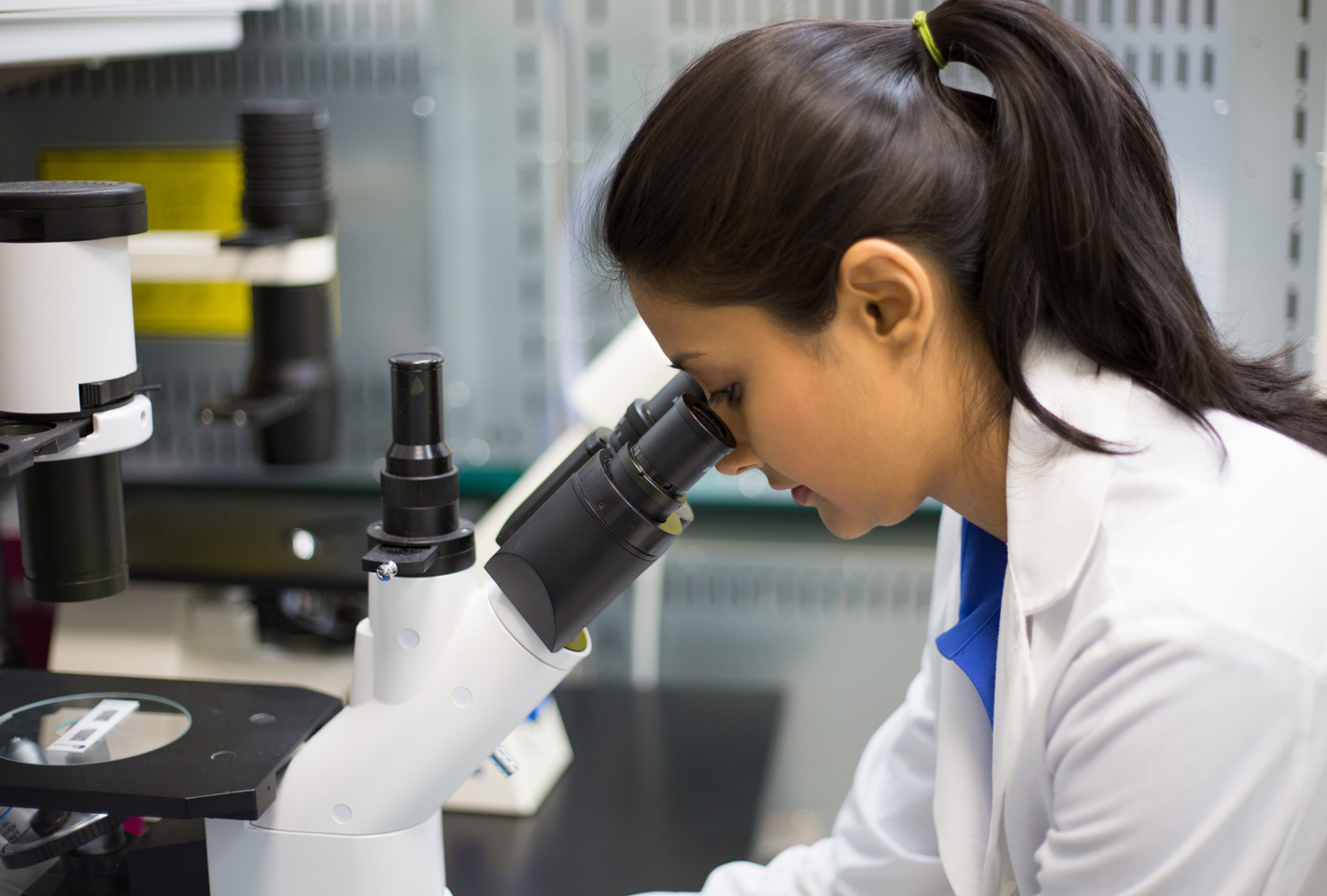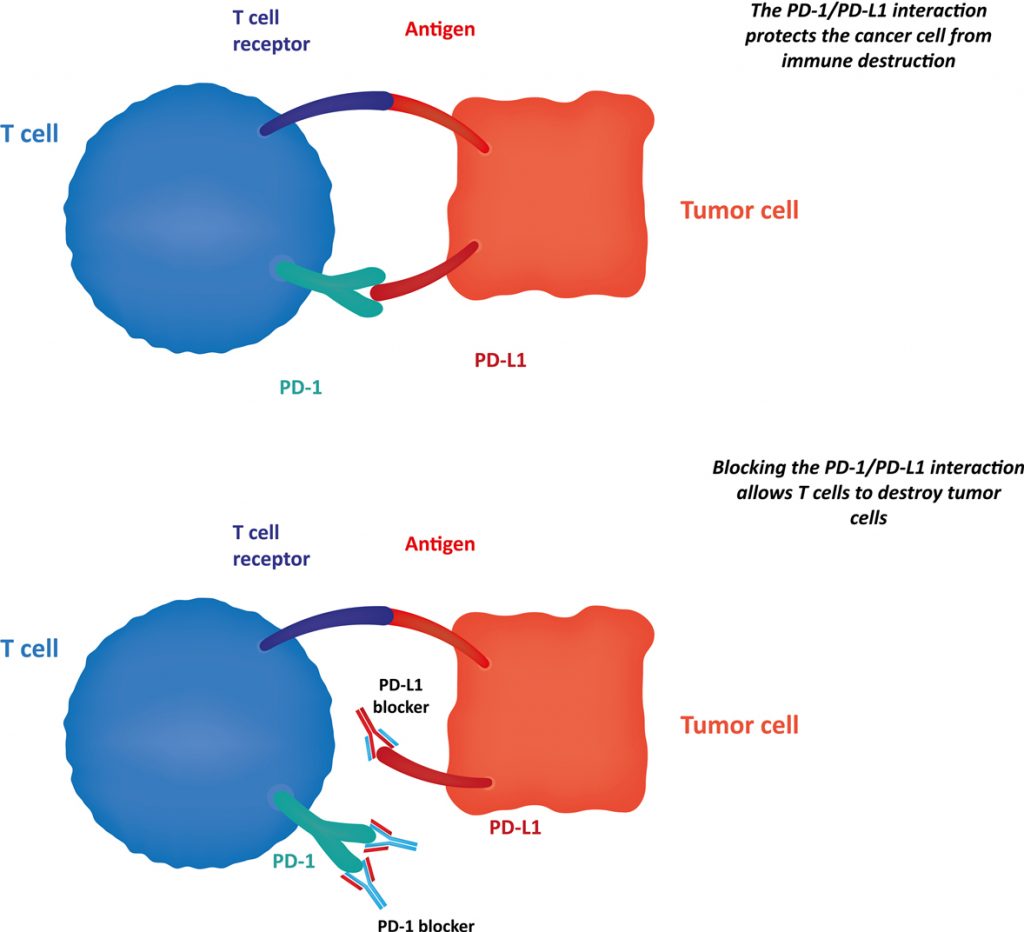What is Merkel cell carcinoma?
Merkel cell carcinoma is an aggressive form of skin cancer that usually appears as a flesh-coloured or bluish- or purplish-red nodule, often on the skin of the face, head, neck, or less often on the legs or arms, though it may occur anywhere. Its name comes from the fact that these cancer cells are derived from the normal Merkel cells in the skin associated with sensation of touch. These normal, non-cancerous Merkel cells were first described in 1875 by German physician, Friedrich Sigmund Merkel (Ramahi, et al., 2013).
The incidence rate of Merkel cell carcinoma is variable across different regions of the world, with the RARECARE database reporting an incidence rate of 0.13 cases per 100,000 people between 1995 and 2002 in Europe. Indeed, the incidence of Merkel cell carcinoma has tripled from 1986 to 2001. It occurs about forty times less often than the also relatively rare but much better-known tumour, malignant melanoma. Men are affected slightly more often than women, at ages most commonly between 60 and 80 years, and mostly in fair-skinned people (Schadendorf, et all., 2017).Long-term sun exposure and impaired immune system function caused by older age, disease, or immunosuppressive drugs increase the risk of Merkel cell carcinoma. Long-term sun exposure seems of prime importance in around 20% of cases, but in the rest, a virus called Merkel cell polyomavirus in the Merkel cells is primarily responsible, very probably assisted by sun exposure, though in most people this virus is also present in a non-aggressive form that does not cause trouble (Ramahi, et al., 2013).
Merkel cell carcinomas may be curable when detected and treated at an early stage with either surgery or radiotherapy, but since they are usually aggressive and advance quickly with high chances of local and distant recurrence, early detection and removal are crucial. People with a Merkel cell carcinoma that is less than 2 cm that has not metastasised to regional lymph nodes have an expected 5-year survival rate of 76 percent. People with a Merkel cell carcinoma that has metastasised regionally to one single lymph node have an expected 5-year survival rate of 50 percent. If the carcinoma has metastasised to more than one lymph node, the survival rate is lower (Iyer J, et al., 2014).
Sensory Receptors in Skin

What causes Merkel cell carcinoma?
Merkel cell polyomavirus is a virus present in approximately 80 percent of Merkel cell tumours. However, most people have been harmlessly exposed to polyomaviruses by the time they are 20 years old. Rarely when the virus infects a cell, though, it may produce proteins able to cause the cell to grow rapidly out of control as a cancer. However, about 20 percent of Merkel cell tumours do not have this virus, indicating that it is not always required for the disease to develop. It could be that once someone has the Merkel cell polyomavirus, it may take other factors such as impaired immune function or sun exposure to permit growth of the cancer. Many people might carry Merkel cell polyomavirus all their lives without ever developing Merkel cell carcinoma (Ramahi, et al., 2013).
Process of Cancer Cell Development

Impaired immune system function and Merkel cell carcinoma are strongly linked. People whose immune systems are chronically suppressed (such as those with HIV or who have received organ transplants and must take immunosuppressive drugs) are more than 15 times more likely to develop Merkel cell carcinoma than those who do not have impaired immune function. Such patients are twice as likely to die of Merkel cell carcinoma as people with full immune activity, since the immune system not only helps prevent the development of Merkel cell carcinoma but also helps keep its cancerous cells from spreading (Ramahi, et al., 2013).
There is also a strong link between Merkel cell carcinoma and sun exposure. The tumour is also highly associated with the presence of squamous cell carcinoma and basal cell carcinoma, which are generally caused or strongly promoted by sun exposure. Ultraviolet exposure and the release of free radicals is in fact a double threat: It not only damages the skin and increases the risk of skin cancer, but also suppresses the immune system which reduces its ability to repair skin damage as well as to recognise and fight off early skin cancers and other diseases (Ramahi, et al., 2013).

Merkel cell carcinoma risk factors and warning signs
Key risk factors for Merkel cell carcinoma include:
- Exposure to the Merkel cell polyomavirus
- Ultraviolet exposure from the sun or tanning beds
- Impaired immune function, for example people taking immunosuppressant treatments
- Light skin colour
- Aged over 50 years (Ramahi, et al., 2013)
Merkel cell carcinomas may well be curable when detected and treated early but since they are normally aggressive and can advance rapidly, prompt detection and removal are especially important. The tumours usually first appear as firm, painless lesions or nodules, often on the head, neck, and less often legs and arms, but also anywhere may be affected. They are typically red, pink, blue, violet, or skin-coloured and vary in size, usually being less than 2 cm in diameter when they are detected (Ramahi, et al., 2013).

To detect skin cancer early, it is essential to look out for any new or changing spots on the skin, particularly if over only several weeks, but also if any new growth or change does not seem particularly dramatic. This need for careful skin checking is especially true for people who have already had a Merkel cell carcinoma, basal cell carcinoma or melanoma. Pay attention to any previously treated site, and if you spot anything suspicious, let your doctor see it immediately.
Some doctors use the acronym “AEIOU” to summarise the combination of risk factors and warning signs:
A: Asymptomatic (lack of soreness or tenderness)
E: Expanding rapidly
I: Immune suppressed
O: Older than 50 years
U: Ultraviolet-exposed fair skin (Ramahi, et al., 2013)
Staging of Merkel cell carcinoma
In order to determine the severity and level of spread of the disease, certain tests will be conducted. Patients with a Merkel cell carcinoma that does not appear to have spread (metastasised) may have a sentinel lymph node biopsy to confirm that the carcinoma has not metastasised to the local lymph nodes. Minimally invasive with a low risk of side effects, the biopsy is very important in determining long-term prognosis, since once cancerous cells reach the lymph nodes, they can easily pass into the bloodstream and travel throughout the body. Full-body imaging such as a CT and/or PET scan may also be performed to look for metastatic tumours. Patients with suspected metastasis may have a fine needle aspiration cytology test to confirm the presence of Merkel carcinoma cells in other organs (Ramahi, et al., 2013).
What happens during a sentinel lymph node biopsy?
To perform a sentinel lymph node biopsy, the medical team begins by locating the sentinel lymph nodes, using a technique known as lymphatic mapping. They then inject a radioactive tracer and/or blue dye at the tumour site, following which the tracer and dye travel to the first draining local lymph node area. An instrument that detects the tracer maps the path from tumour to the sentinel lymph nodes. Any cancer cells spreading from the tumour generally follow along this same path.
The surgeon then removes the sentinel lymph nodes, following which in a pathology laboratory, an expert pathologist examines the lymph nodes under a microscope, looking for cancer cells. If the biopsy reveals any cancer cells, the surgeon removes all the other local nodes from the area, and in most cases, also uses radiation therapy to help destroy them (Kermani, et al, 2016).
What are the benefits of the sentinel lymph node biopsy?
It is still uncertain whether sentinel lymph node biopsy, followed by removal of all the lymph nodes in the local area if the biopsy reveals cancer, extends survival, though it theoretically should. Therefore, doctors still routinely recommend the technique, since cancerous cells reach the lymph nodes in about one in three people with Merkel cell carcinoma, and are often not detectable just on physical examination (Ramahi, et al., 2013). Another additional benefit of performing sentinel lymph node biopsy might be to avoid systematic surgical removal of lymph nodes which has the subsequent risk of infection and swelling of the arms and legs.
Stages of Merkel Cell Carcinoma
Once the original tumour biopsy, the sentinel node biopsy and any other tests performed (including imaging and blood tests) are completed, the physician will determine the stage of the disease. The stage represents how advanced and widespread the cancer is.
The choice of treatments depends directly on what stage the cancer has reached. There is no universally agreed staging system for Merkel cell carcinoma, but the system most often used is the American Joint Committee on Cancer TNM system (Edge, et al., 2010) where T stands for the primary (original) tumour size and skin layers’ infiltration depth, N indicates spread to the local lymph nodes (and extent of nodal involvement) and M indicates distant metastases (spread to distant organs beyond the local lymph nodes).
The American Joint Committee on Cancer system includes five stages:
- Stage 0: In situ tumours (superficial tumours that have not penetrated below the epidermis, the skin’s outermost layer).
- Stages I and II: Tumours not known to have advanced to the local lymph nodes, with stage I including relatively smaller, lower-risk tumours and stage II including larger and/or higher-risk tumours.
- Stage III: Tumours known to have reached the local lymph nodes but not beyond.
- Stage IV: Distant metastases, tumours whose cancer cells have spread to distant organs beyond the local lymph nodes.
Each of these stages is then broken down more precisely, from lowest to highest risk, depending on the variable characteristics of the primary tumour, nodal metastases and/or distant metastases. For more details, please refer to the American Joint Committee on Cancer Staging Manual.

Merkel cell carcinoma treatments
Treatment of Merkel cell carcinoma is largely based on the stage of the disease, as well as the overall health and well-being of the patient. To date, the core treatments for Merkel cell carcinoma have been surgical excision, radiation and chemotherapy (Schadendorf, et all., 2017).
Complete surgical excision of the primary (original) tumour is recommended when Merkel cell carcinoma is diagnosed at a local stage (stages I to II), followed by verification. After surgical excision, if the risk of recurrence or spread to the local lymph nodes is high (due to factors such as a large primary tumour, incomplete excision or a person with a suppressed immune system), the doctor will usually recommend that the lesion be treated with a course of radiation after the removal of local lymph nodes. Some doctors recommend a course of radiation for all people with Merkel cell carcinoma. Radiation treatment may destroy any cancer cells not detectable by physical examination and can help prevent recurrence or spread of the cancer to the local lymph nodes or beyond. Merkel cell carcinoma is especially responsive to such adjunctive radiation (Schadendorf, et all., 2017).
If the cancer has reached a lymph node (stage III), doctors generally also excise and irradiate all the lymph nodes in the area in addition to the removal of the primary (original) tumour. Thereby reducing the risk of recurrence and possibly preventing distant metastasis. In most cases, patients with Merkel cell carcinoma with no obvious lymph node disease may undergo a procedure called sentinel lymph node biopsy to try and verify whether cancerous cells have reached the local lymph node area. Merkel cell carcinomas frequently spread to the nearby lymph nodes or beyond by the time of diagnosis, whether or not the lymph nodes are enlarged or detectable on physical examination (Schadendorf, et all., 2017).Doctors may in addition recommend chemotherapy for people with Merkel cell carcinoma, particularly if their cancer has spread to distant sites, such as lungs or liver. A variety of chemotherapies have been used for advanced Merkel cell carcinoma, with varied (but often limited) success, and unfortunately often with significant side effects. No controlled clinical studies have shown that any chemotherapies extend survival, though some often lead to short lasting tumour shrinkage. Doctors may not always use chemotherapies to increase survival, but may use chemotherapies to improve quality of life by decreasing pain or increasing comfort and mobility (Schadendorf, et all., 2017).

The latest clinical research in this field has focused on boosting the immune system’s ability to attack Merkel cancer cells. Early studies have been especially promising with “checkpoint inhibitor” immunotherapies, which block certain molecular receptors that normally inhibit white blood cell activation, preventing potentially dangerous inflammatory and autoimmune reactions. This block can also be used by cancer cells in order to avoid the immune attack. The blockade of these receptors that act as the “brakes” of the immune system may induce the activation of the body’s white blood cells to fight the tumour.
One such class of therapies showing early promise are those that block an immune-inhibiting receptor called programmed death-1 (PD-1), encouraging white blood cell activation for them to attack cancer cells. Another checkpoint blockade therapy being tested on people with Merkel cell carcinoma blocks programmed death-ligand 1 (PD-L1), a molecule that binds to PD-1 on tumour cells, forming a complex that inhibits white blood cell activation and suppresses the immune system. By blocking PD-1 or PD-L1, these treatments can encourage the activation of white blood cells to attack cancer cells. This class of treatments has shown early promise in some people with advanced Merkel cell carcinoma (Schadendorf, et all., 2017).
PD-1/PD-L1 Blockade

You may wish to ask your doctor about these, and any other clinical trials currently recruiting patients with Merkel cell carcinoma to test new treatments.
Follow-up
If you have been treated for Merkel cell carcinoma, you and your doctor should monitor your skin closely for the rest of your life. Recommended follow-up after treatment is every three to four months for the first three years, then every six months for up to five years. Imaging tests like CT scans, PET scans or ultrasounds might be also used by your doctor, together with a skin examination.
Challenges in diagnosis and treatment
]The diagnosis and management of Merkel cell carcinoma is challenging. Patients as well as physicians may initially mistake these tumours for benign lesions, the single most common misdiagnosis being a cyst or folliculitis (swelling from inflamed hair follicles). It is important to note that Merkel cell carcinoma is much rarer than benign lesions such as inflamed hair follicles.
In some cases, the Merkel cell tumour may arise in locations that elude detection, delaying diagnosis, about 5 percent of Merkel cell carcinomas occurring in the mouth, nasal cavity and throat, where they are clearly hard to detect before the disease has advanced.
Since Merkel cell carcinoma is an aggressive cancer, delays in detection easily lead to late diagnosis and treatment, such that recurrences are common and successful treatment is more difficult to achieve.
Prevention guidelines for Merkel cell carcinoma
Impaired immune function is a major contributor to the development and progression of Merkel cell carcinoma, so as is always the case, it is important to adopt a healthy lifestyle to assist in keeping your immune system as efficient as possible. And since sun exposure is believed to be a major contributor to development of the disease, it is important to prevent sun overexposure. This is even more important if you have already had Merkel cell carcinoma, or if any close family member has had the disease or any other skin cancer.
To protect yourself, in more detail, make these habits part of your daily health care routine:
- Seek the shade, especially between 10:00 and 16:00 in spring, summer and autumn.
- Do not sunburn.
- Avoid attempting to tan and never use sunbeds.
- Cover up with clothing, including a broad-brimmed hat and ultraviolet-blocking sunglasses.
- Use a high SPF broad spectrum (UVA/UVB) sunscreen every day on all exposed skin in spring, summer or autumn, and reapply it every couple of hours while outside.
- Keep new-born children out of the sun for their long-term benefit. Sunscreens should be used on babies over the age of six months. Younger babies should be kept out of the sun altogether.
- Examine your skin all over every month.
- See your physician every year for a professional skin examination.
- For those people who have already had Merkel cell carcinoma, the recommended follow-up after treatment is every three or four months for the first three years, then every six months for up to five years.

References
Edge, S.B. & Compton, C.C. The American Joint Committee on Cancer: the 7th Edition of the AJCC Cancer Staging Manual and the Future of TNM. 2010. Ann Surg Oncol 17: 1471.
Iyer J, Storer B, Paulson K, et al. Relationships between primary tumour size, number of involved nodes and survival among 8,044 cases of Merkel cell carcinoma. Journal of the American Academy of Dermatology. 2014;70(4):637-643.
Kermani AT, Rezaei E, Zarifmahmoudi L, Sadeghi R. Lymphatic mapping and sentinel node biopsy in a patient with upper limb Merkel Cell Carcinoma: a case report and brief review of literature. 2016. Nuclear Med Rev 2016; 19, 1: 42–45
Ramahi E, Choi J, Fuller CD, Eng TY. Merkel Cell Carcinoma. American journal of clinical oncology. 2013;36(3):299-309.
Schadendorf, Dirk et al. Merkel cell carcinoma: Epidemiology, prognosis, therapy and unmet medical needs. European Journal of Cancer, 2017. Volume 71, 53 – 69
Authors
John Hawk, St John’s Institute of Dermatology, London, United Kingdom
Paolo A. Ascierto, Istituto Nazionale Tumori Fondazione, Naples, Italy
Enrique Grande Pulido, Hospital Universitario Ramon y Cajal, Madrid, Spain
Lydia Makaroff, European Cancer Patient Coalition, Brussels, Belgium
Adapted from information originally produced by The Skin Cancer Foundation.
Downloads
- Merkel Cell Carcinoma Leaflet (CZ) - (PDF)
- Merkel Cell Carcinoma Leaflet (DA) - (PDF)
- Merkel Cell Carcinoma Leaflet - (PDF)
- Merkel Cell Carcinoma Leaflet (FI) - (PDF)
- Merkel Cell Carcinoma Leaflet (FR) - (PDF)
- Merkel Cell Carcinoma Leaflet (DE) - (PDF)
- Merkel Cell Carcinoma Leaflet (GR) - (PDF)
- Merkel Cell Carcinoma Leaflet (IT) - (PDF)
- Merkel Cell Carcinoma Leaflet (PL) - (PDF)
- Merkel Cell Carcinoma Leaflet (PT) - (PDF)
- Merkel Cell Carcinoma Leaflet (RO) - (PDF)
- Merkel Cell Carcinoma Leaflet (RU) - (PDF)
- Merkel Cell Carcinoma Leaflet (ES) - (PDF)
- Merkel Cell Carcinoma Leaflet (SE) - (PDF)

















